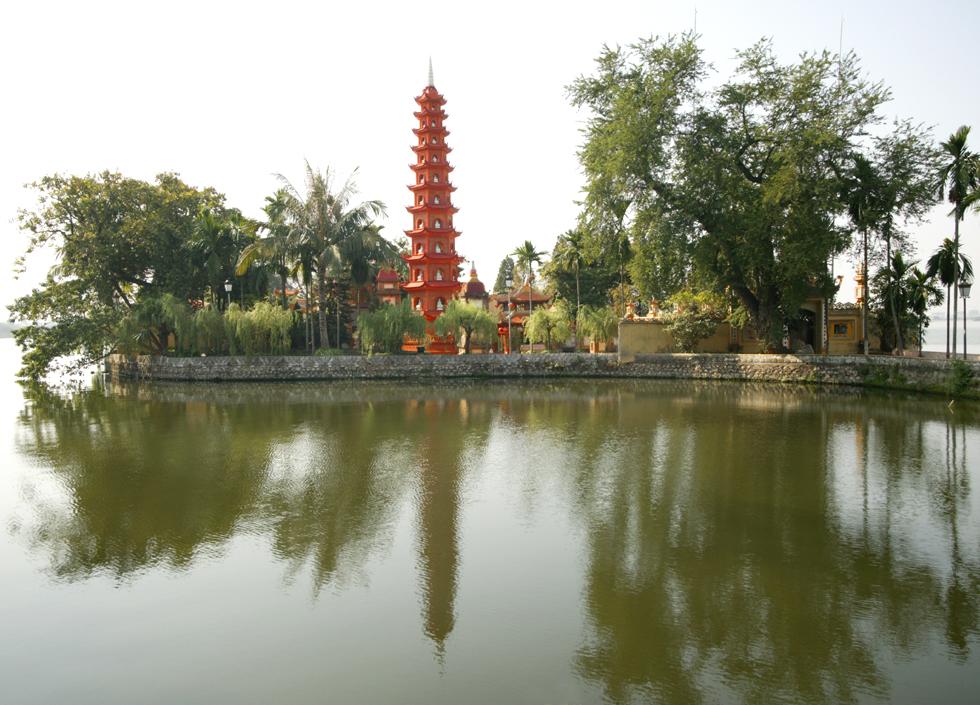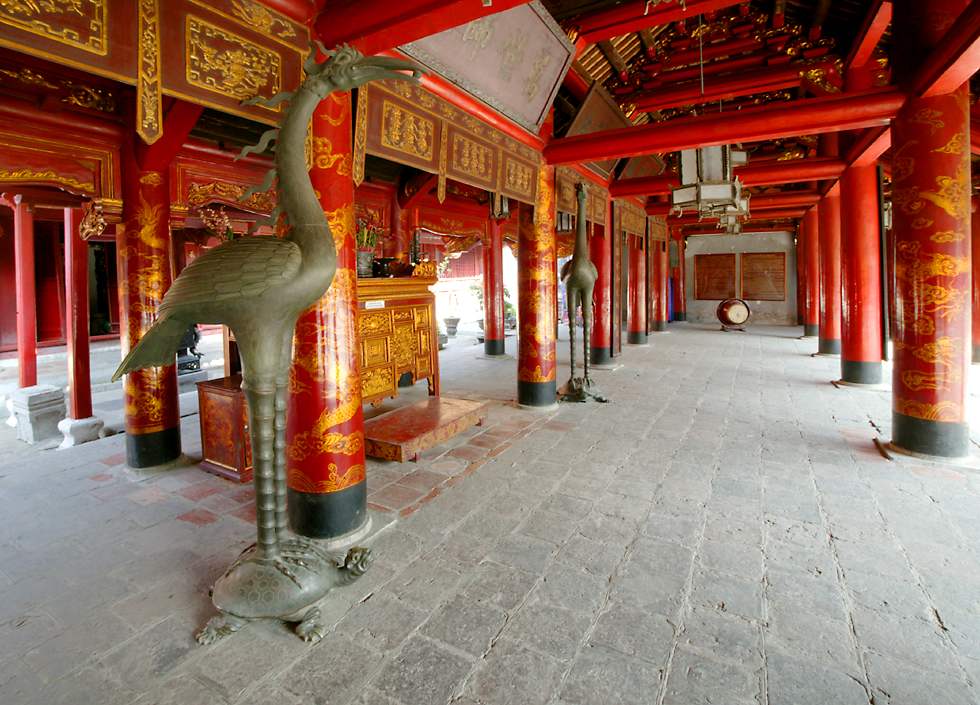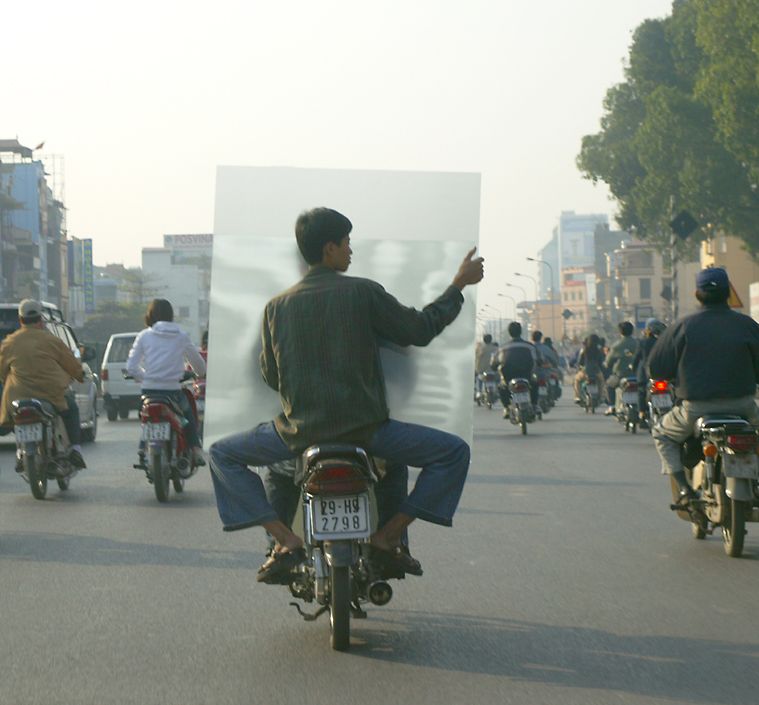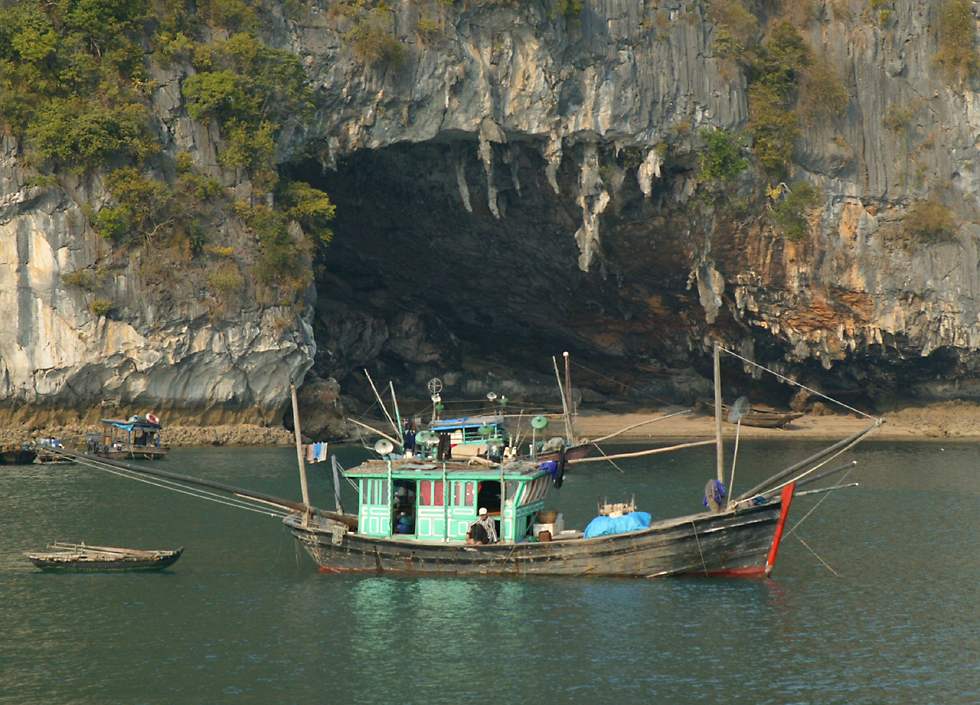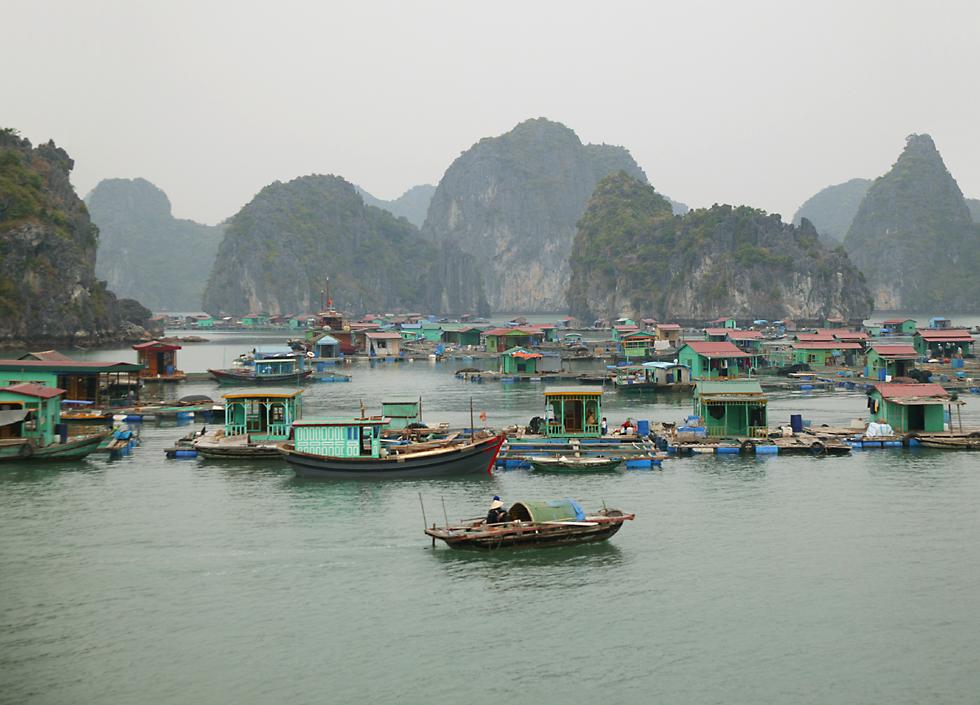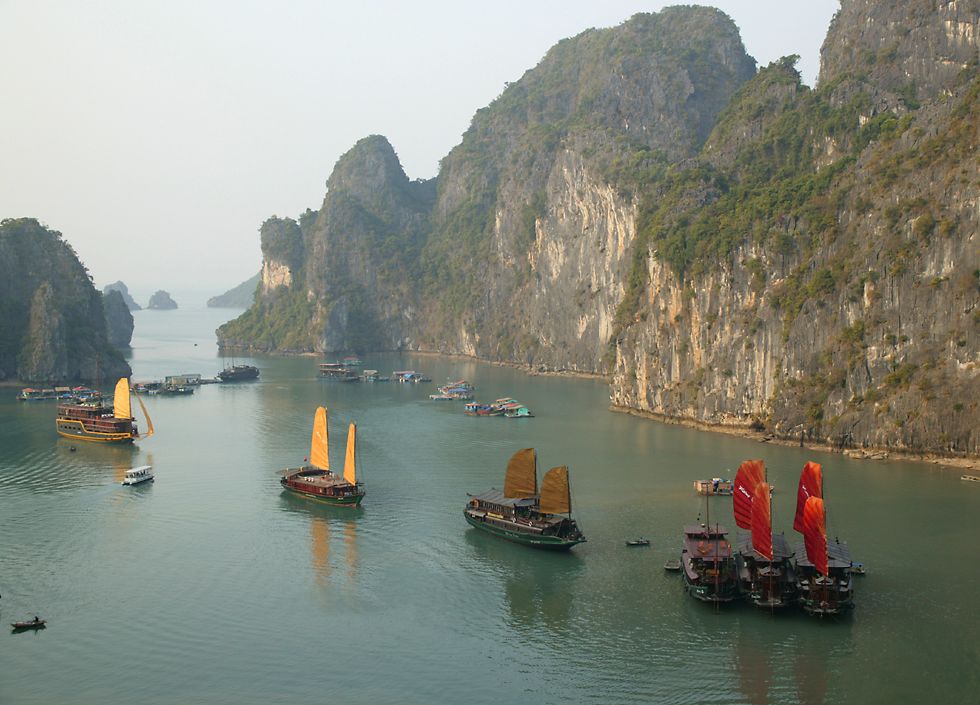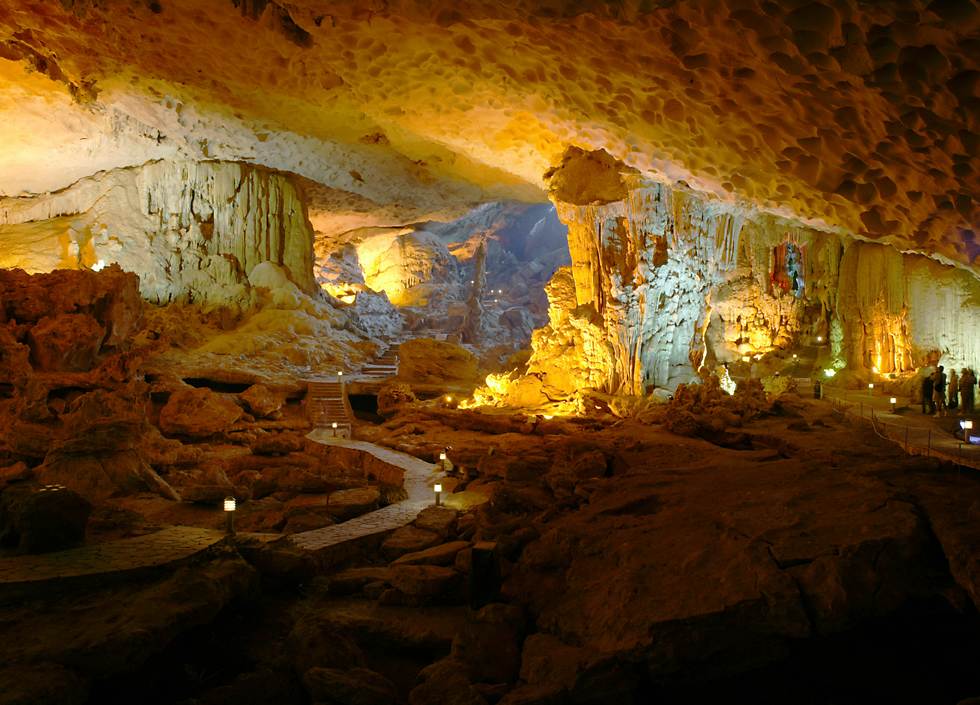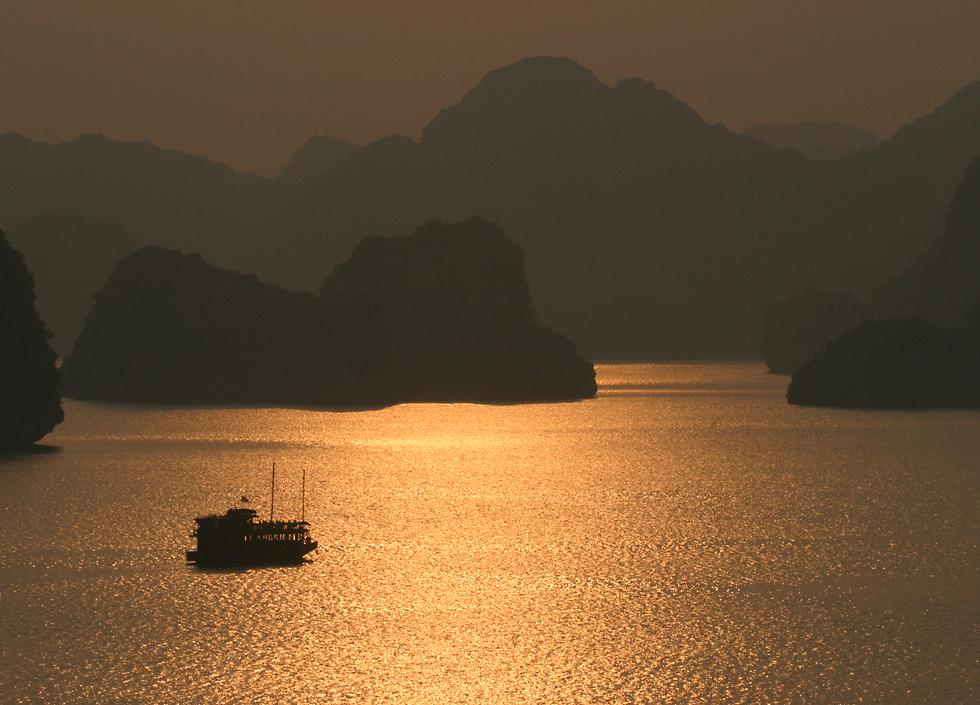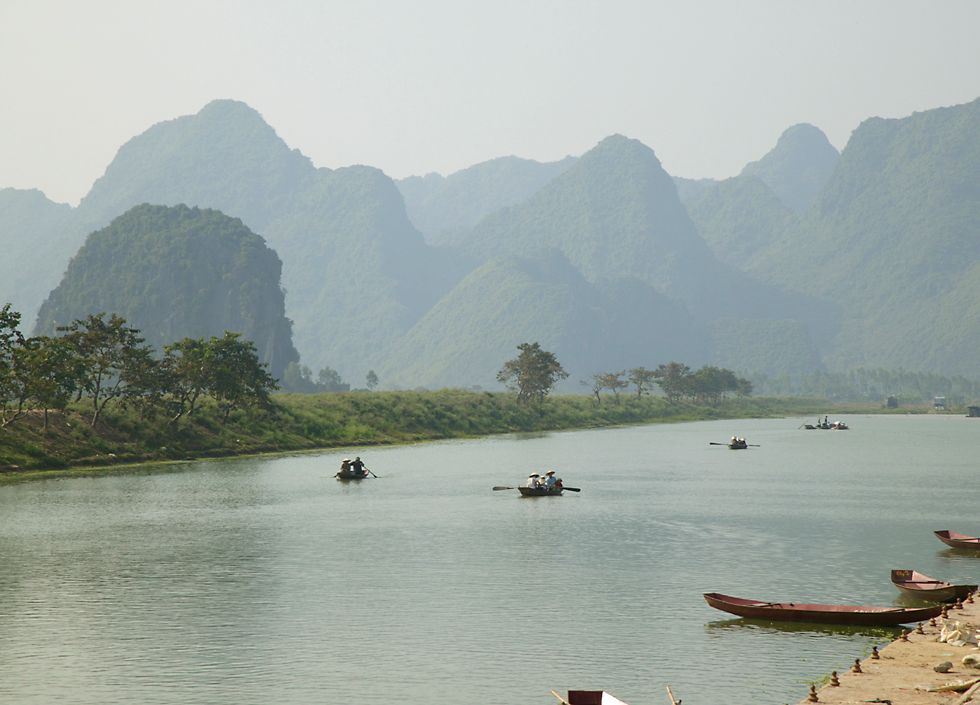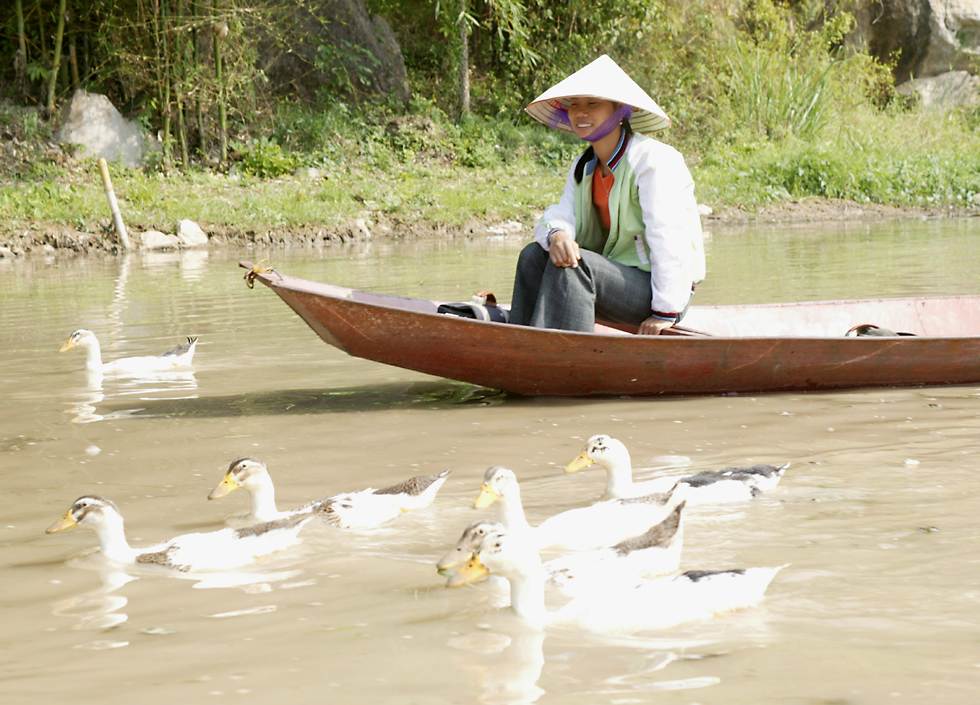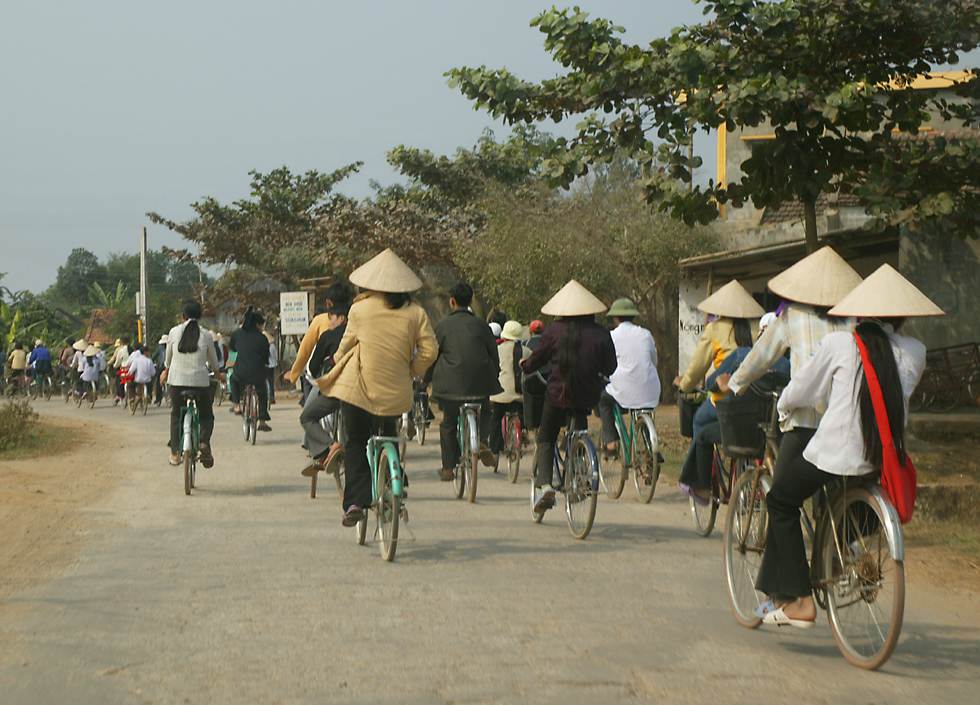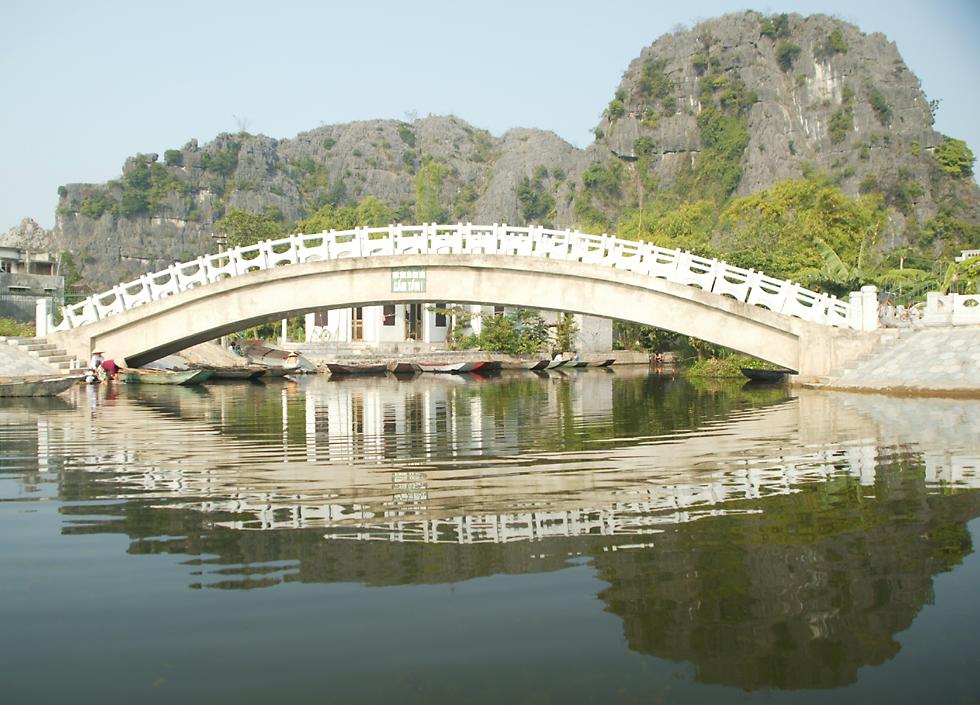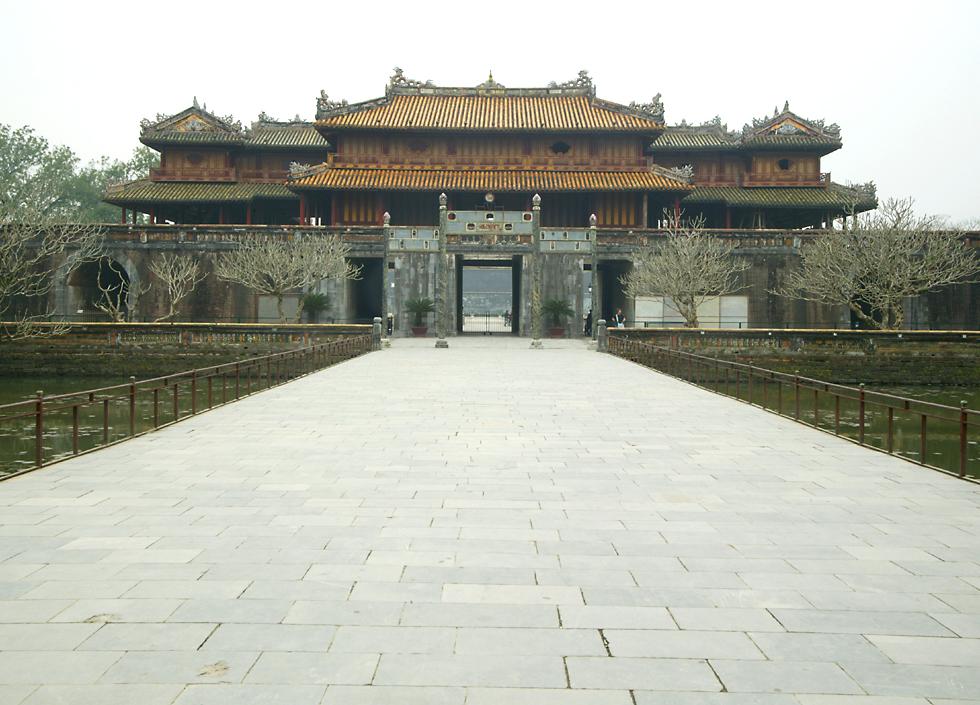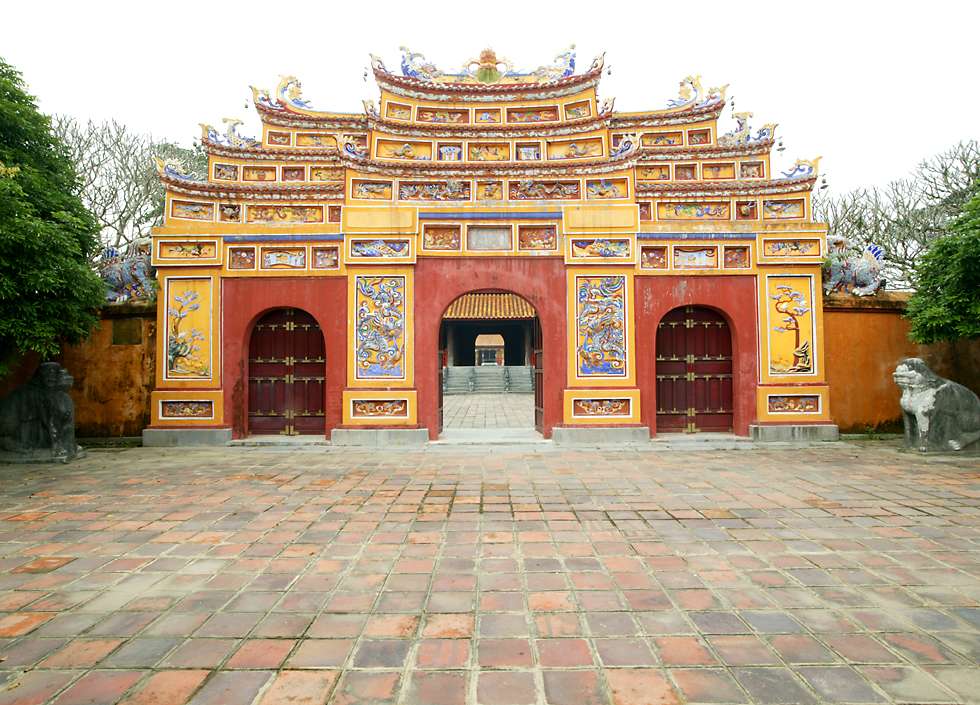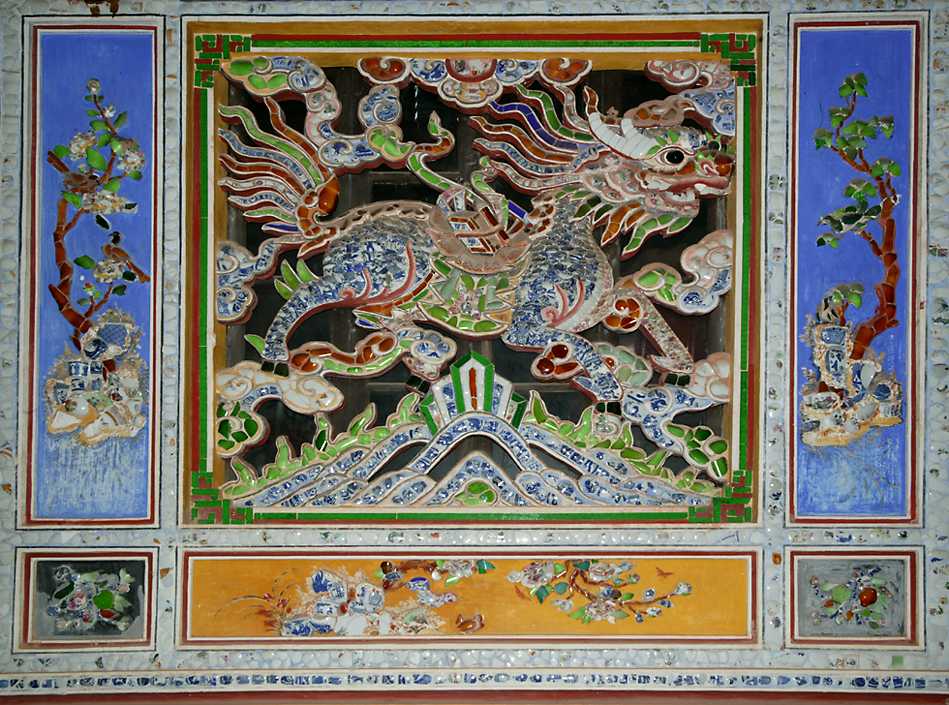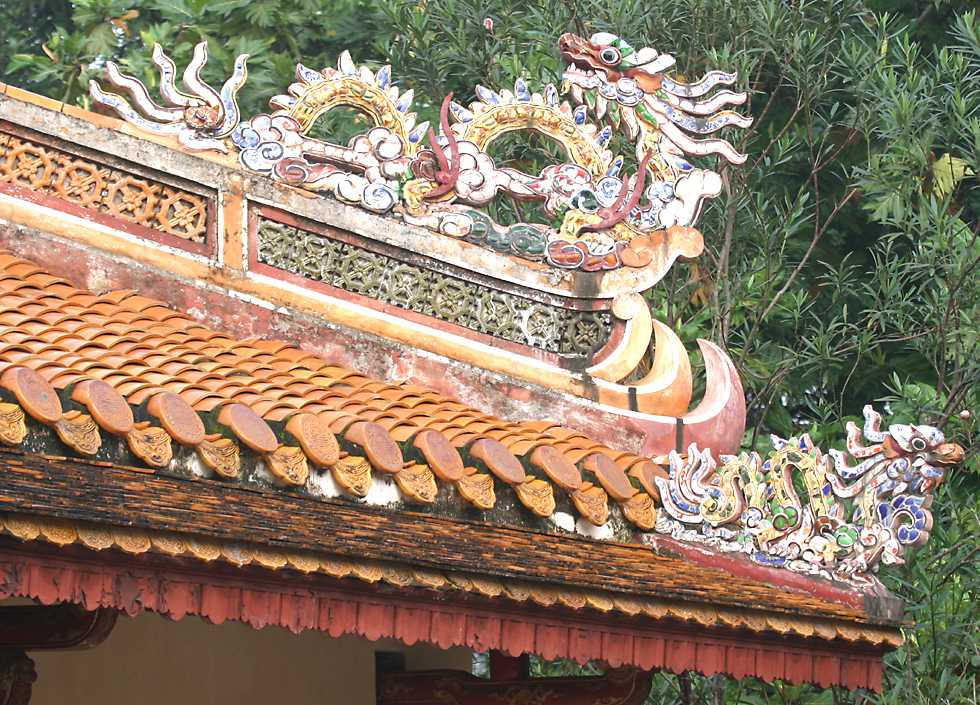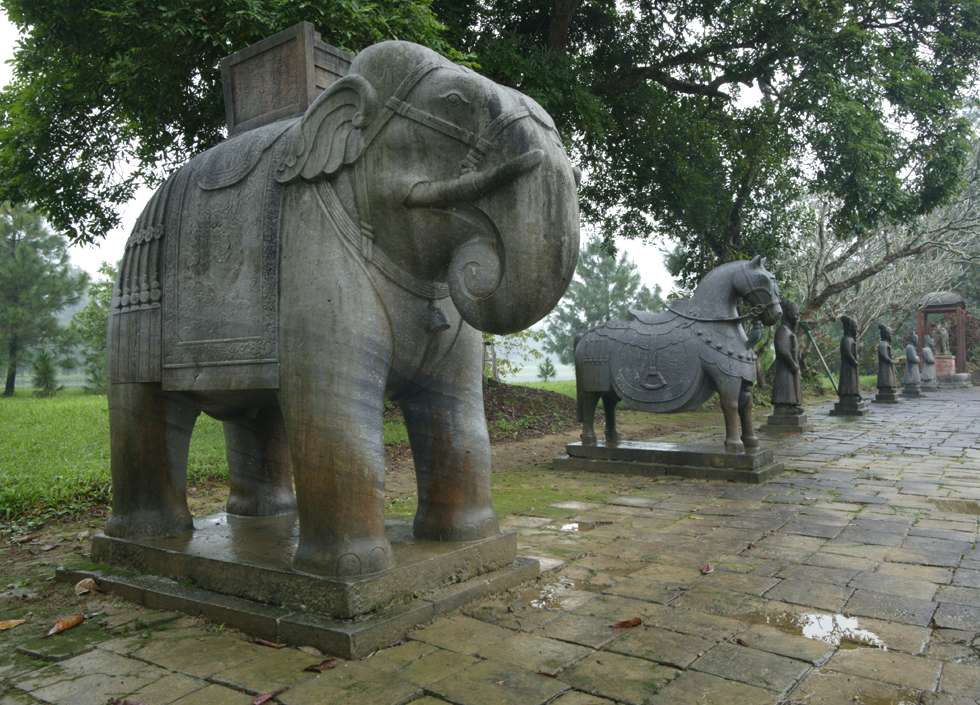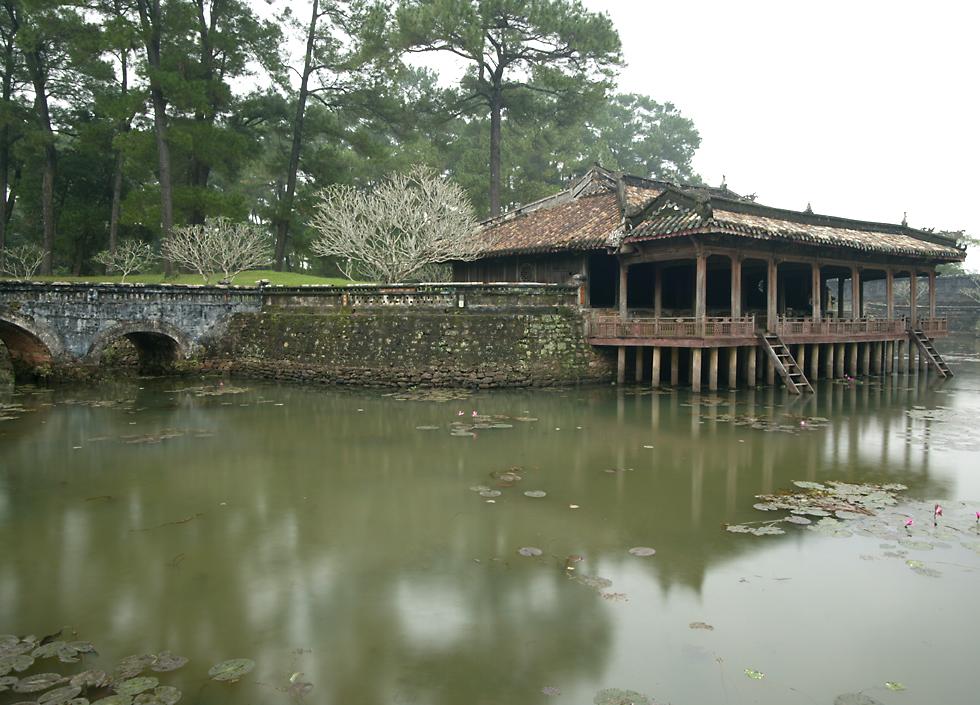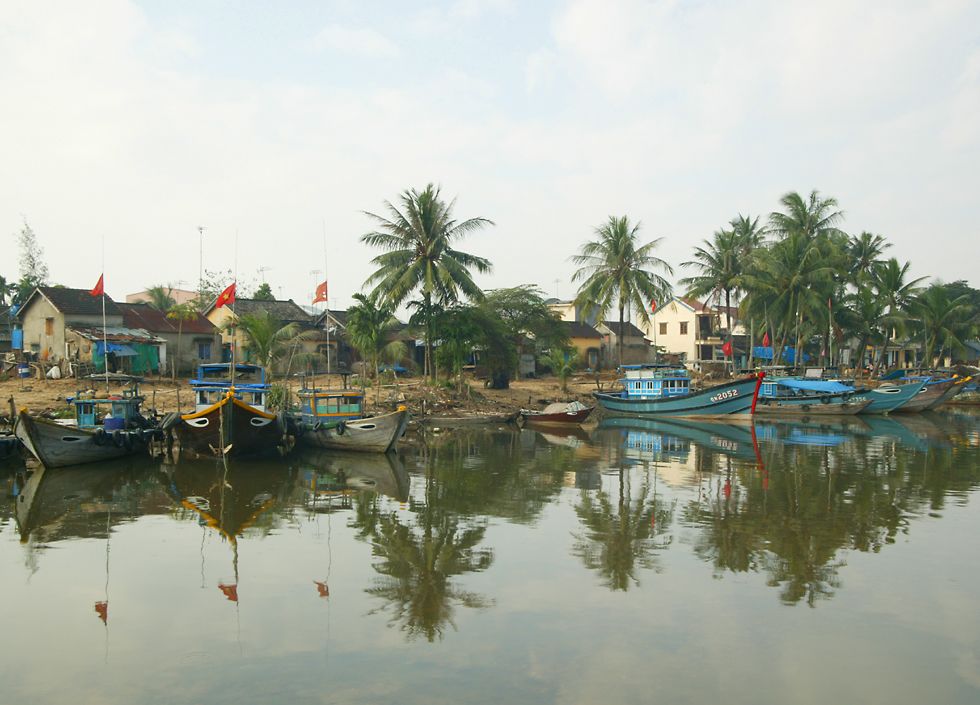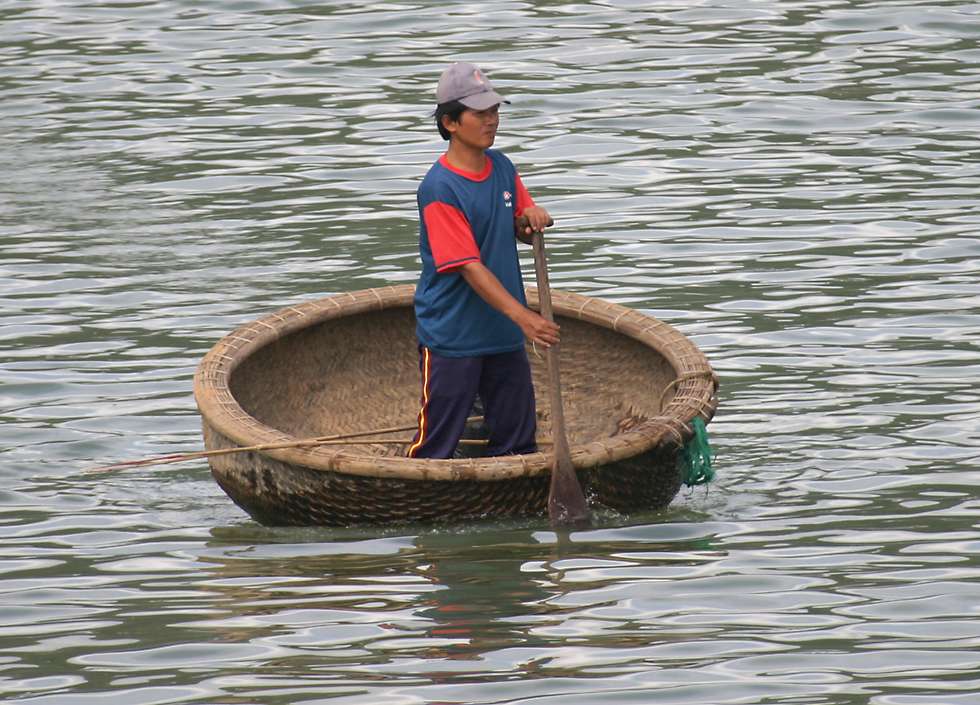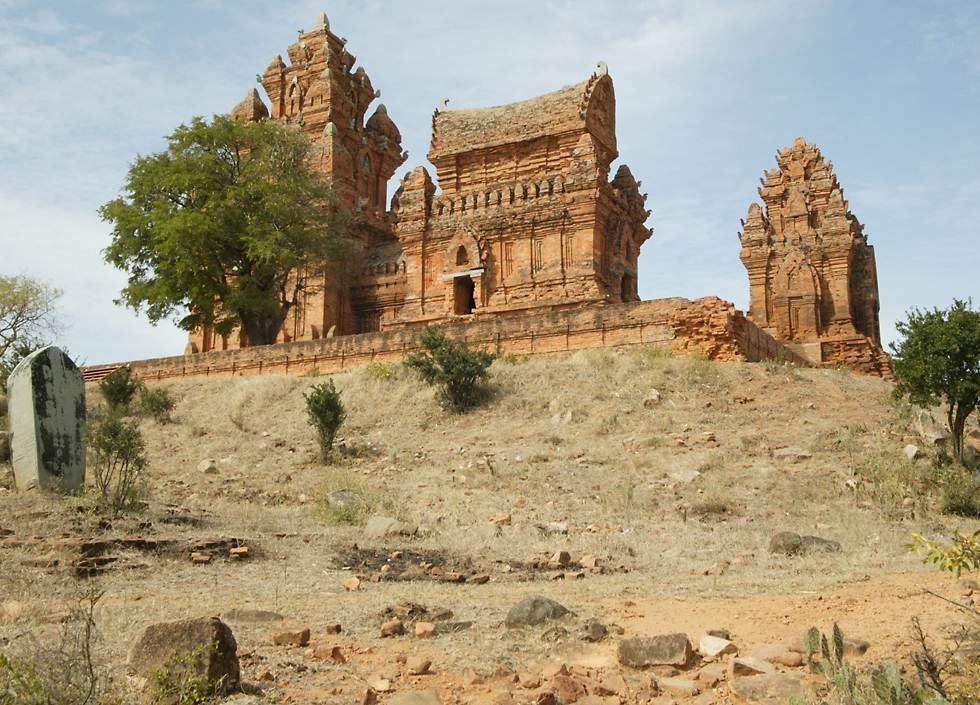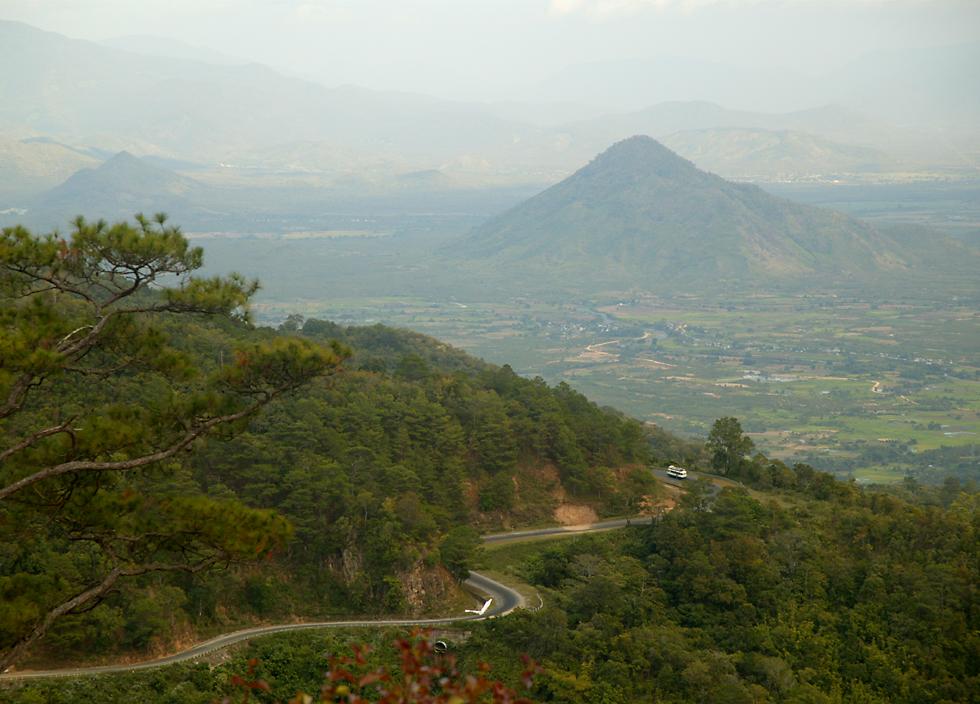Highlights of Vietnam
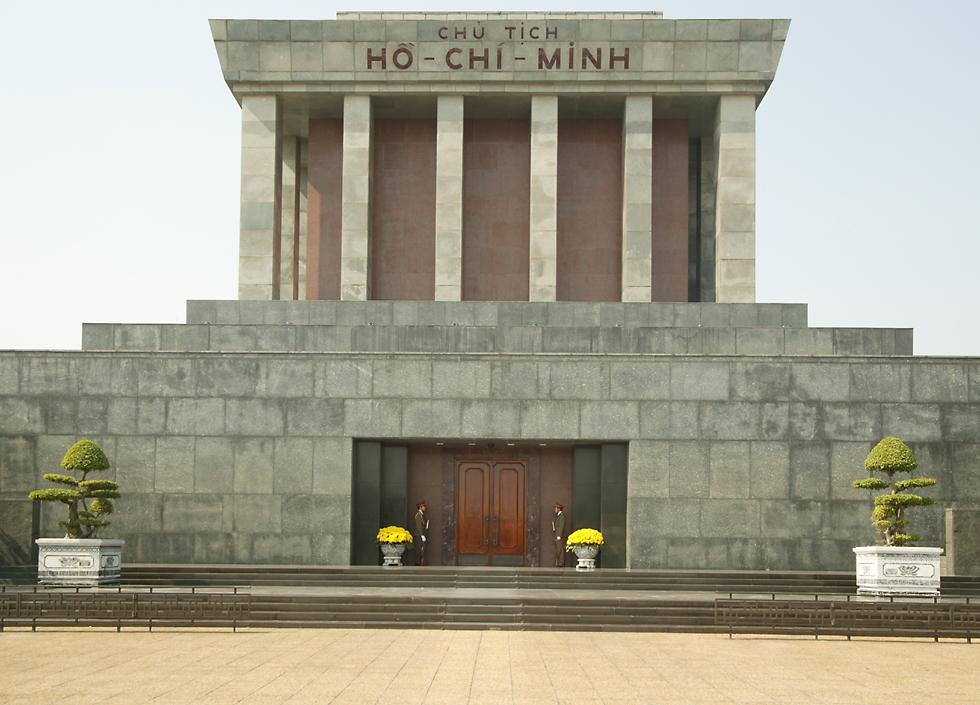
I visited Vietnam for two weeks in December of 2004. With such a short time in the country I had to choose which parts of the country I would visit and which I wouldn't. I originally planned to arrive in Saigon, head up north to Hanoi by means I hadn't determined, and then backtrack to Saigon and fly back to the United States from there. Happily I had the good sense to change this plan at the last minute so that I arrived in Hanoi, flew first from Hanoi down to Danang and then from Danang to Cam Ranh, and then drove down to Saigon and a flight out of the country from there. For a communist country Vietnam is very straightforward to visit and travel through, certainly much better than Russia, which still has ridiculous communist-era regulations like being sponsored for a visa by a local organization and registering with the police when you travel. Entry into Vietnam and travel around the country was much more straightforward, and there were several surprises like a shop in Hanoi specializing in Christmas decorations - Vietnam has a significant catholic minority, but it's still an eye-opener in a country which many westerners perceive as one of the last holdouts of old-style "godless" communism. Nor did I experience any hostility about the war anywhere during my trip. I did have several touristic encounters with Vietnam's communist heritage. I visited Ho Chi Minh's tomb in Hanoi, which was almost as ugly and block-like as Lenin's tomb in Moscow. I also visited the army museum and air force museum in Hanoi, as well as a collection of military memorabilia which I stumbled across in Saigon, near the zoo. When I went down to Danang I had the great good fortune (for an aviation enthusiast) to photograph vintage MiG-21 jet fighters of the Vietnamese air force in action. This was perhaps running a bit more risk than I should have, but I didn't get into any trouble and the photos were published in several British aviation magazines. Another location in Hanoi which should be on the visiting list for people interested in this period of history is the Hoa Lo prison, known by American airmen as the "Hanoi Hilton". Ironically, a large part of the prison grounds has now been redeveloped and occupied by a multi-storey western hotel, which is surprising, considering that the French used the prison for many years to hold Vietnamese communists, a number of whom were executed by guillotine. I expected that the current government would have wanted the whole place preserved for its propoganda value, but apparently mammon over-rode those considerations. However, a few of the buildings are still preserved, with some laughable communist propaganda of the time which describes how well American prisoners were treated. One especially intriguing exhibit is the flight suit and other personal articles of modern-day US senator John McCain. |
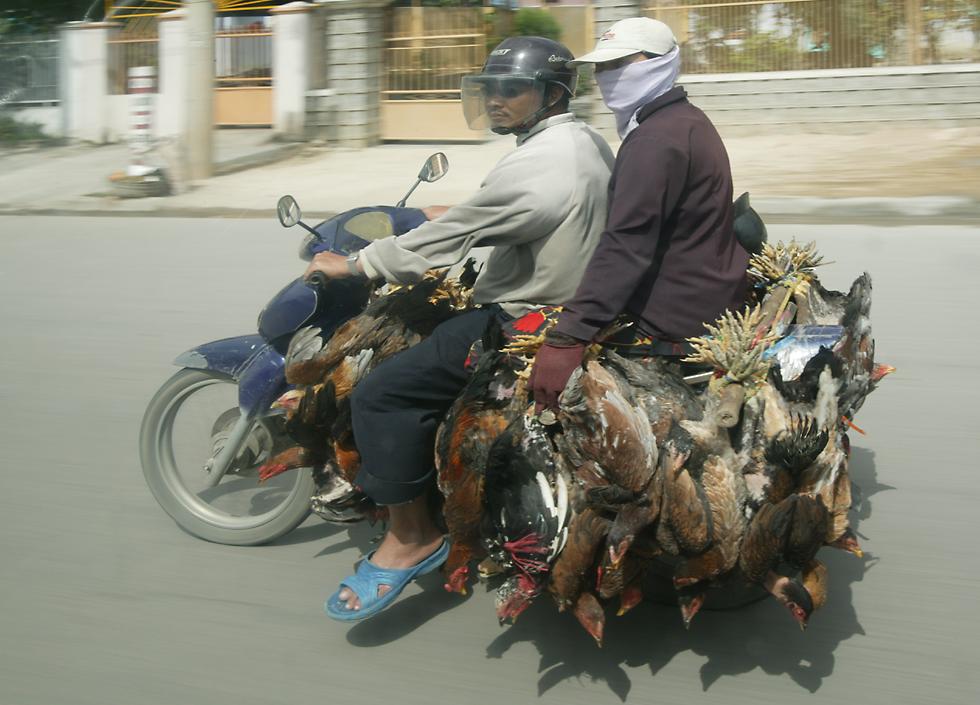
Some chickens get their first and probably last ride around town! |
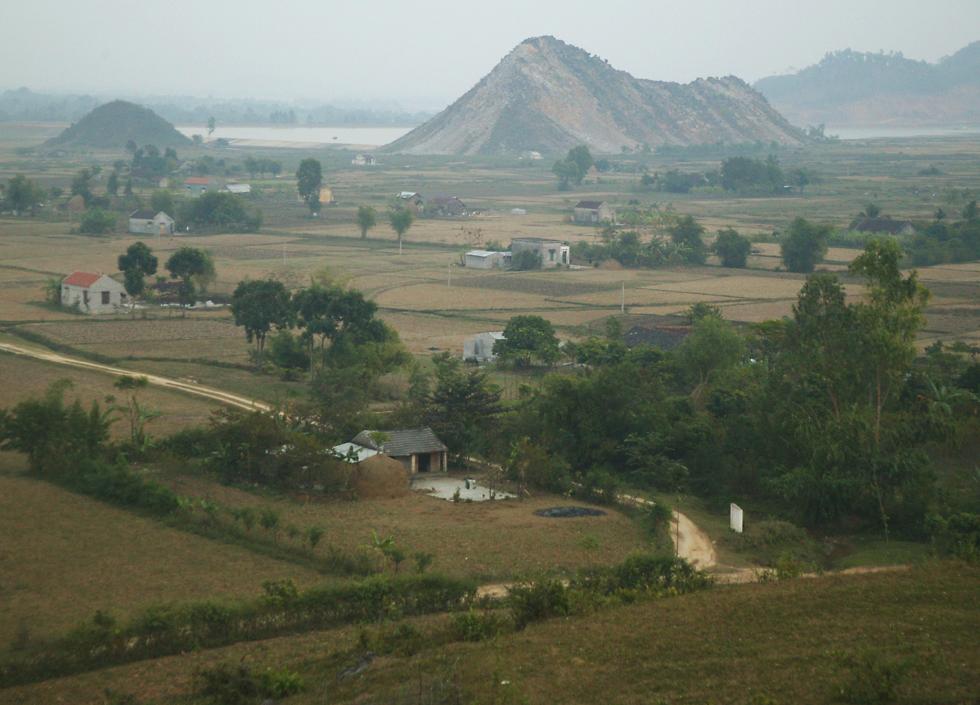
There's a lot of interesting scenery all over Vietnam, if you can see through the haze! This is a rural scene on the way to Cuc Phuong national park, where I spent a night and photographed quite a bit of interesting wildlife. Amazingly, Cuc Phuong was opened as Vietnam's first national park by Ho Chi Minh himself during the American war, as the Vietnamese call it (the better to distinguish it from the French war fought earlier, and the Cambodian war and Chinese war fought later!). It's said that he open the park with a speech in which he said "The forest is gold. If we know how to conserve it well then it will be very precious. Destruction of the forest will lead to serious effects on both life and productivity." Unfortunately, his words haven't been heeded, and over 80% of Vietnam's forests were cut down after the American war ended. With its own resources depleted, Vietnam then helped deforest Cambodia. |
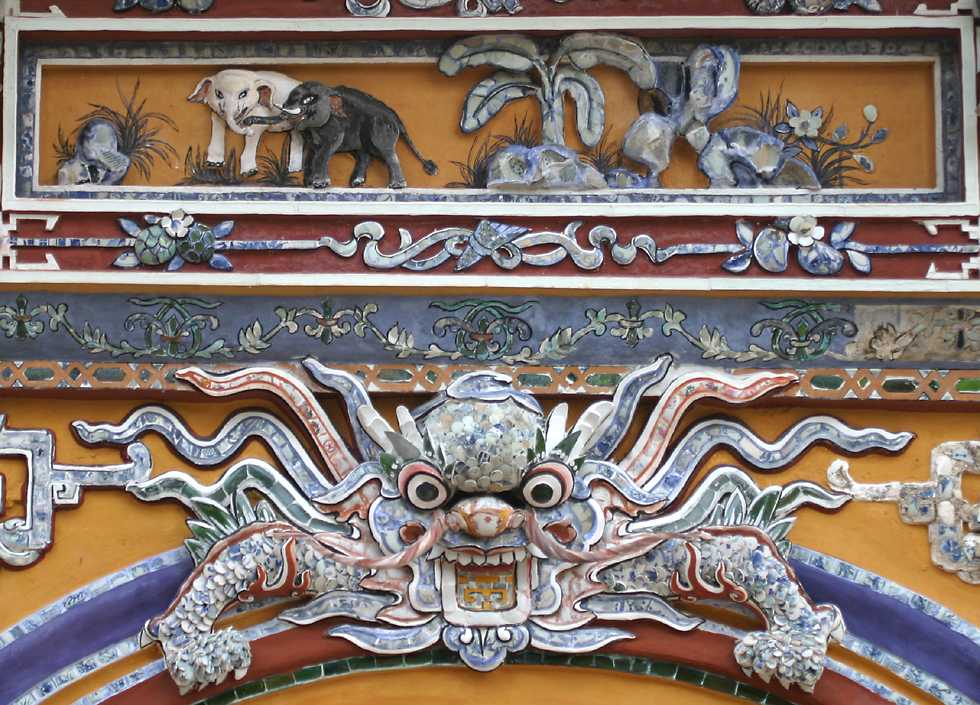
Here's a closeup of some of that decoration, with an interesting looking monster of some sort and a pair of elephants next to what looks like a banana tree. This decoration is very Chinese in style. A lot of it isn't custom made but consists of broken crockery which was brought as ballast in Chinese trading ships. This is a common feature of this type of ornamentation, you can see it again in some of the temples in Bangkok. |
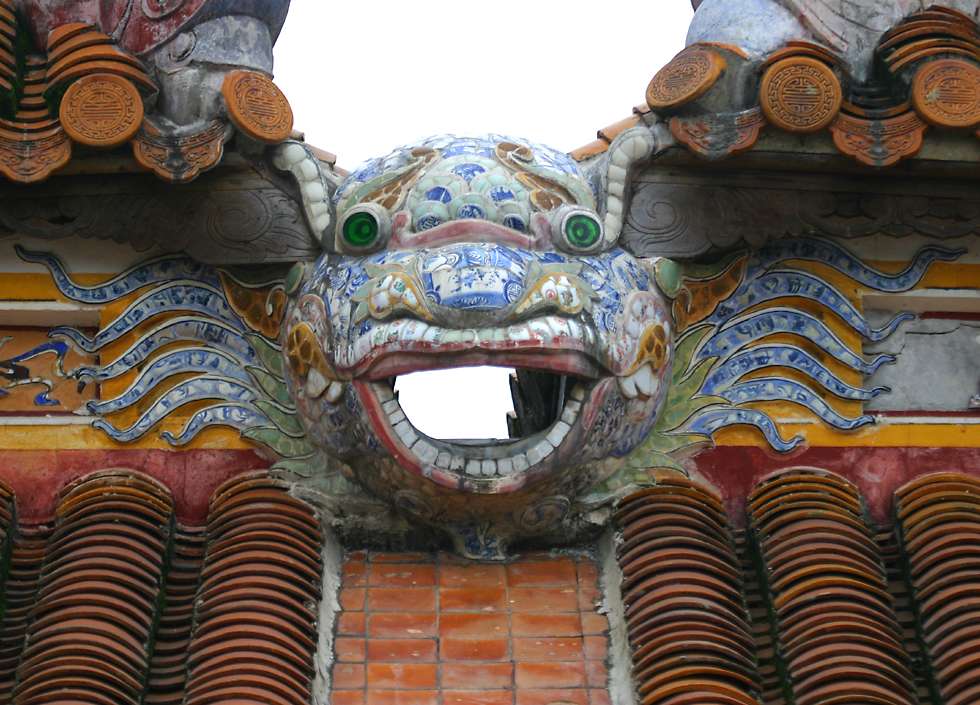
Many of the best aspects of the imperial city are the small details, like this drainpipe on one of the buildings. |

The most interesting buildings still standing are the Dien Tho Residence of the Nguyen dynasty's queen mothers, the emperor's library and this theater. Hue only became the imperial capital in 1802, when Nguyen Phuc Anh gained control over the whole country. As mentioned before, it continued as capital until 1945, when emperor Bao Dai abdicated and the communists set up shop in Hanoi. |
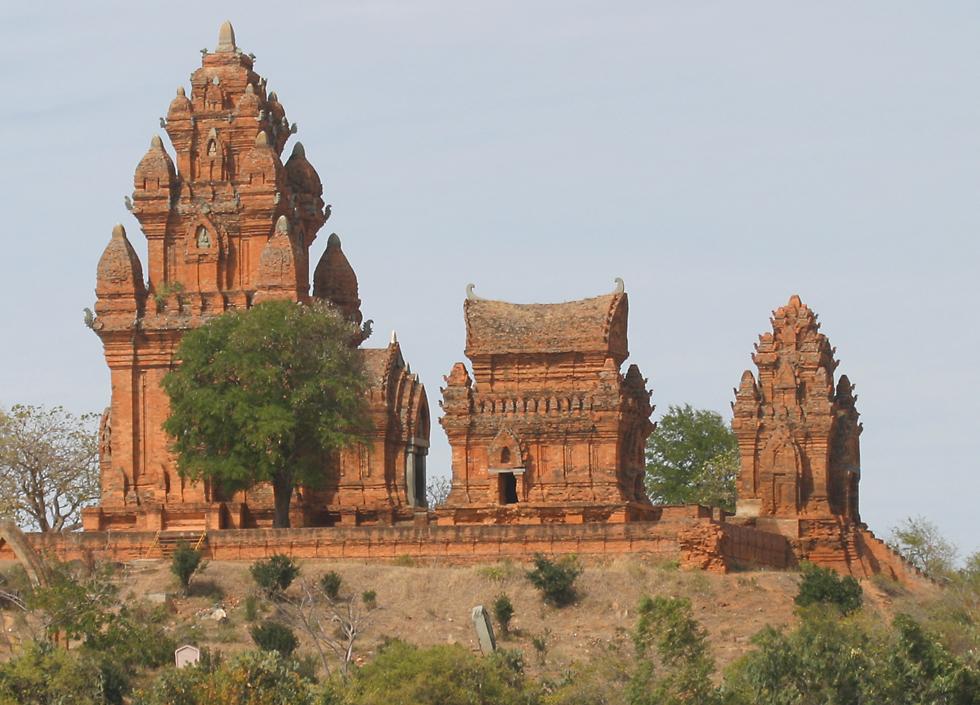
The Cham towers are a little known aspect of Vietnamese architecture. The Cham Kingdom of south-central Vietnam had a Hindu culture like that of Angkor Wat across the border in present-day Cambodia, however they were long-time rivals of the Cambodians, and the two countries often invaded each other (most recently in 1979, when the Cambodians threw the Khmer Rouge government out of power). The Cham kings never erected the huge stone monuments of the Khmer kings, instead they constructed tall masonry and brick complexes. Several of these survive in the area around Nha Trang, such as the Po Nagar towers which are beside the Cai river right in the middle of the city. It's decorated with various dancing Hindu deities and is still a venerated site for locals. The Po Klaung Garai towers which you see here are some distance further south, near the start of the road leading inland to the mountain resort town of Dalat. These towers are in particularly good condition, and their hilltop location makes a great photo. |
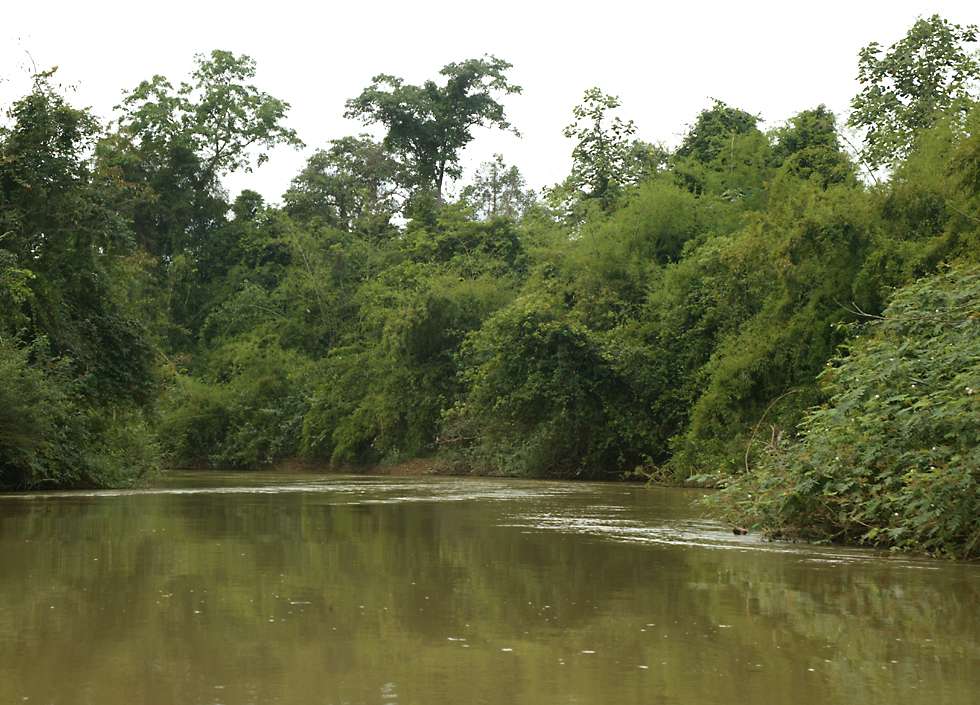
The national parks that I visited weren't particularly scenic, mostly because the trees block most of the views. Cat Tien national park is between Saigon and Dalat and has a river and Crocodile Lake, which I never got to. The river has a small set of rapids, but the whole area is fairly flat, and the river is brown with sediment, so again it doesn't make for a great photo. |
